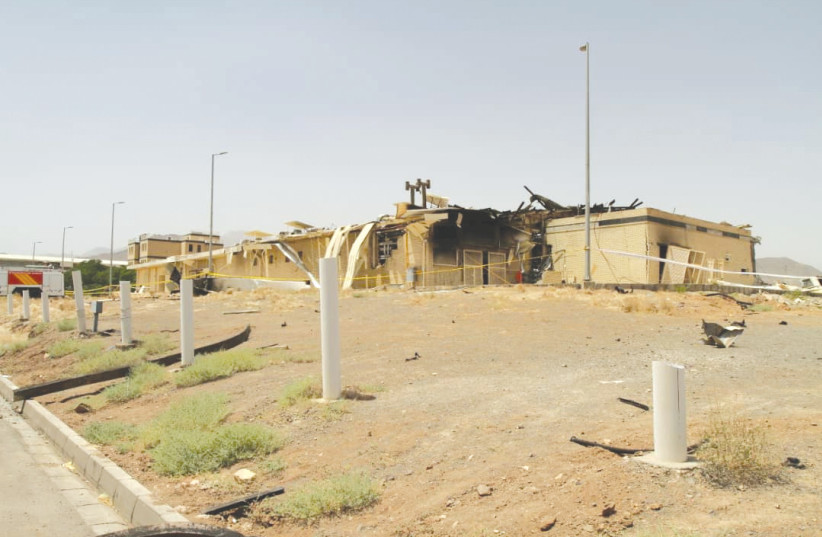Iran and the International Atomic Energy Agency (IAEA) on Wednesday reached a partial deal on nuclear issues that had been in dispute between the sides, while leaving other disputed issues open.
Some of the disputes date back to evidence the Mossad found of undeclared illicit nuclear activities with the disclosure of the Islamic Republic’s nuclear archive in April 2018, some to February and some to June.
In mid-September, IAEA Director-General Rafael Grossi announced he had reached a deal on many of the issues in dispute, but less than two weeks later he said that Tehran had reneged on the deal.
Since then, the IAEA board of directors has threatened twice to condemn Iran and potentially to refer it to the UN Security Council. However, each time it has decided to give the regime more time due to the potential of broader nuclear talks in Vienna with the world powers.
The deal comes two weeks before a deadline the US imposed for the issue being resolved and in parallel to ongoing shaky talks between Iran and the world powers about a return to the 2015 JCPOA nuclear deal.

“Due to the completion of judicial and security checks on the affected cameras, as well as the IAEA’s steps to condemn the act of vandalism against the Tessa complex, Iran has voluntarily authorized the agency to replace the damaged cameras with new ones,” Nour News said in an initial vague announcement from the Iranian side.
Hours later, the IAEA elaborated on the deal, saying it would soon install new surveillance cameras at Iran’s Karaj centrifuge component manufacturing workshop under an agreement between Grossi and the head of the Atomic Energy Organization of Iran, Mohammad Eslami.
“The cameras, to be installed in the coming days, will replace those that were removed from the Karaj facility earlier this year. In addition, the agency and Iran will continue to work on remaining outstanding safeguards issues with the aim of resolving them,” said the statement.
“The agreement with Iran on replacing surveillance cameras at the Karaj facility is an important development for the IAEA’s verification and monitoring activities in Iran. It will enable us to resume necessary continuity of knowledge at this facility,” Grossi said. “I sincerely hope that we can continue our constructive discussions to also address and resolve all outstanding safeguards issues in Iran.”
According to the IAEA, the agreement between the two sides includes the following elements:
• The agency and Iran will continue to work on remaining outstanding safeguards issues with the aim of resolving them. To this end, Iran and the agency will conduct a series of exchanges of information and assessments, including through meetings of experts.
• The agency will make available a sample camera and related technical information to Iran for analysis by its relevant security and judiciary officials, in the presence of the agency inspectors, on December 19.
• The agency will reinstall cameras to replace those removed from the workshop at Karaj and perform other related technical activities before the end of December 2021, on a date agreed between the agency and Iran.
Iran has shown the IAEA the prior three of four cameras that it had removed from Karaj and “data storage media” containing their footage, except for the one containing a destroyed camera’s footage.
The Islamic Republic has claimed it did not destroy the camera, but, rather, that it was destroyed by a Mossad sabotage operation in June.
In fact, Tehran has used the excuse of the alleged Israeli attack as its reason for delaying the IAEA’s return to monitoring the site until now.
The part of the agreement regarding Iran inspecting the IAEA’s cameras was likely also directed at publicly emphasizing that point, given that Iran has had access to the IAEA’s cameras for years.
It appeared that Iran was still going to withhold some access from the IAEA regarding viewing the cameras’ footage in real time, and it was unclear if the IAEA had regained full access to prior footage.
Some defense and intelligence officials have alleged that Iran has used the period of shutting out the IAEA since June to smuggle portions of its 60% enriched uranium to clandestine sites to either proceed toward a nuclear weapon covertly or preserve the option.
